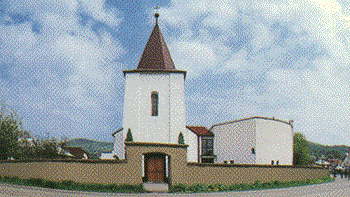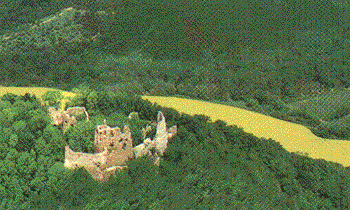Village Jasenov was founded under a castle with the same name.
History of village has began to be written since the year 1279, when it was developed from
extramural settlement of the castle Jasenov which was probably possessed by the Pethénys.
Some historians say, that opinion of Gy. Dudás does not contain any historical basis,
that the castle has been already owned by aristocrats from Michalovce in the year 1279.
The first written mention is from 1451. To the last third of the 17th century it was
owned by the Drugeths, in following years was occupied by several families.
According to preserved written annals Jasenov belongs to the oldest villages in the
district Humenné and was founded following common law. Village was developed as
subjective village belonging at first to the Jasenov castle county and later to the
Humenné county.

|
|
Roman-catholic church of St.Martin
|
A cemetery with the last stage of burying was in area of the Church in the past when
Maria Theresia was the empress (1740 - 1780).
In the year 1750 the older wooden Church burnt out. A bell-tower standing there to
present-day served for ringing to the already mentioned wooden Church.
In January 1937 the Cultural House was built as the first one in the Zemplín region.
Points of interest, remarkables and rarities


|
|
Jasenoc castle
|
Jasenov castle is situated on a high hill to the east of the village. The castle was
owned by yeomen of Italian origin - the Drughets from Humenné to the year 1644 - after
Bačkovská battle in the year 1317. At that time Juraj Rákoczi occupied and destroyed it.
In 1328 the castle is mentioned under the name "castrum Jezenev". From this medieval, in
the first third of 15th century strengthened castle preserved the upper castle of this
date, with a ground plan adapted to the configuration of terrain, with a tower and
palace.
The former medieval fortification was built up by a new strong external fortification of
the castle with cannon bastions and system of defense corridors. The cannon bastions are
situated on the western and southwestern side. At the gateway of the first courtyard is
an another cannon bastion.
It were preserved rests of walls, vaults, opens and a stone jamb of the Renaissance
gateway.
The castle was destroyed during a siege in the year 1644.
At the end of 19th and at the beginning of 20th century was conserved.
Translation: Hošková